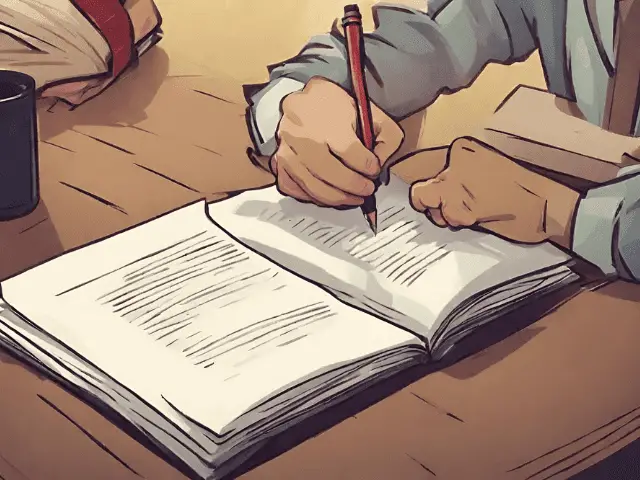
Applying for scholarships can be daunting, especially if you have to showcase your creativity and talent in addition to your academic achievements. Whether you are a writer, an artist, a musician, or a filmmaker, you need to create original and engaging content that reflects your voice and style, as well as the goals and values of the scholarship program.
In this article, we will share some of the best practices and tips for creating creative submissions, such as essays, videos, art, or music, to help you stand out from the crowd and increase your chances of winning the scholarship. We will also recommend some tools and platforms for editing and enhancing your submissions, such as Grammarly, Canva, Audacity, and YouTube.
Understand the Requirements and Expectations
The first step to creating a successful creative submission is to understand the requirements and expectations of the scholarship program. You need to read the guidelines carefully and follow them strictly. Some of the things you should pay attention to are:
- The deadline and the submission format
- The word count, the length, or the size of your submission
- The theme, the topic, or the prompt of your submission
- The criteria, the rubric, or the evaluation process of your submission
- The audience, the purpose, or the message of your submission
By understanding the requirements and expectations, you will be able to tailor your submission to the specific needs and preferences of the scholarship program. You will also avoid making mistakes or missing important details that could disqualify you or lower your score.
Choose a Topic or an Idea that Interests You
The next step to creating a successful creative submission is to choose a topic or an idea that interests you and showcases your personality, passion, and skills. You want to choose something that you are knowledgeable about, curious about, or excited about. You also want to choose something that is relevant, original, and meaningful to you and the scholarship program.
To choose a topic or an idea that interests you, you can:
- Brainstorm different options and write them down
- Research the scholarship program and its mission, vision, and values
- Research the theme, the topic, or the prompt of the submission and find different angles or perspectives
- Research the audience and their interests, needs, and expectations
- Research the current trends, issues, or challenges in your field of interest
- Research the best practices, examples, or models of creative submissions in your field of interest
By choosing a topic or an idea that interests you, you will be able to create a creative submission that is authentic, original, and engaging. You will also be able to demonstrate your enthusiasm, creativity, and expertise to the scholarship committee.
Plan and Outline Your Submission
The third step to creating a successful creative submission is to plan and outline your submission. You need to organize your thoughts, ideas, and information in a logical and coherent way. You also need to decide on the structure, the format, and the style of your submission.
To plan and outline your submission, you can:
- Use a mind map, a diagram, or a list to brainstorm and organize your main points and supporting details
- Use a thesis statement, a hook, or a question to introduce your topic and your main argument or message
- Use headings, subheadings, or bullet points to divide your submission into sections and subsections
- Use transitions, connectors, or signposts to link your ideas and guide your reader
- Use a conclusion, a summary, or a call to action to end your submission and reinforce your main argument or message
By planning and outlining your submission, you will be able to create a creative submission that is clear, concise, and coherent. You will also be able to avoid repetition, confusion, or inconsistency in your submission.
Write, Edit, and Proofread Your Submission
The fourth step to creating a successful creative submission is to write, edit, and proofread your submission. You need to use your plan and outline as a guide and write your submission in a clear, concise, and engaging way. You also need to edit and proofread your submission to check for errors, mistakes, or improvements.
To write, edit, and proofread your submission, you can:
- Use a word processor, a text editor, or a writing tool to write and format your submission
- Use Grammarly, a grammar checker, or a proofreader to check and correct your grammar, spelling, punctuation, and style
- Use a plagiarism checker, a citation generator, or a reference manager to check and cite your sources
- Use feedback, comments, or suggestions from your peers, mentors, or experts to improve your submission
- Use a rubric, a checklist, or a guideline to evaluate your submission and make sure it meets the requirements and expectations
By writing, editing, and proofreading your submission, you will be able to create a creative submission that is accurate, polished, and professional. You will also be able to avoid plagiarism, errors, or mistakes that could lower your score or damage your reputation.
Enhance Your Submission with Visuals or Audio
The fifth step to creating a successful creative submission is to enhance your submission with visuals or audio. You need to use images, videos, art, or music to complement, illustrate, or emphasize your submission. You also need to use tools and platforms to edit and enhance your visuals or audio.
To enhance your submission with visuals or audio, you can:
- Use Canva, a graphic design tool, or a photo editor to create and edit images, graphics, or art
- Use Audacity, an audio editor, or a music maker to create and edit audio, music, or sound effects
- Use YouTube, a video platform, or a video editor to create and edit videos, animations, or slideshows
- Use captions, titles, or descriptions to explain or label your visuals or audio
- Use credits, acknowledgments, or permissions to attribute or license your visuals or audio
By enhancing your submission with visuals or audio, you will be able to create a creative submission that is more appealing, attractive, and memorable. You will also be able to showcase your skills, talents, and creativity in different media.
Submit Your Submission and Follow Up
The final step to creating a successful creative submission is to submit your submission and follow up. You need to submit your submission according to the instructions and the deadline of the scholarship program. You must also follow up with the scholarship committee and thank them for the opportunity.
To submit your submission and follow up, you can:
- Use Submittable, a submission management software, or an online form to submit your submission and track its status
- Use email, phone, or social media to communicate with the scholarship committee and confirm your submission
- Use a thank you note, a letter, or a card to express your gratitude and appreciation to the scholarship committee
- Use feedback, comments, or suggestions from the scholarship committee to learn from your submission and improve your future submissions.
By submitting your submission and following up, you can create a positive impression and a lasting relationship with the scholarship committee. You will also be able to increase your chances of winning the scholarship and achieving your goals.
Conclusion
Applying for scholarships that require creative submissions can be challenging but also rewarding. By following the steps and tips in this article, you will be able to create original and engaging content that reflects your voice and style, as well as the goals and values of the scholarship program. You can also use tools and platforms, such as Grammarly, Canva, Audacity, and YouTube, to edit and enhance your submissions. We hope this article has helped and inspired you to create your best creative submissions. Good luck, and have fun! ?


















I want to apply for the grant of a degree y business administration
To apply for a degree in Business Administration, you will need to research universities or colleges that offer this program. Look for requirements such as academic transcripts, letters of recommendation, a resume or CV, and a personal statement.
You may also need to take standardized tests like the GMAT or GRE. Make sure to check the specific requirements of each institution you are interested in applying to.
Once you have gathered all the necessary documents and have met the requirements, you can submit your application through the university’s admissions portal or by mail. Keep track of important deadlines and make sure to follow up on your application status.
Additionally, there are scholarships available specifically for Business Administration students that can help fund your degree. Websites like pickascholarship.com can help you search for relevant scholarships and provide guidance on how to apply. Good luck with your application!